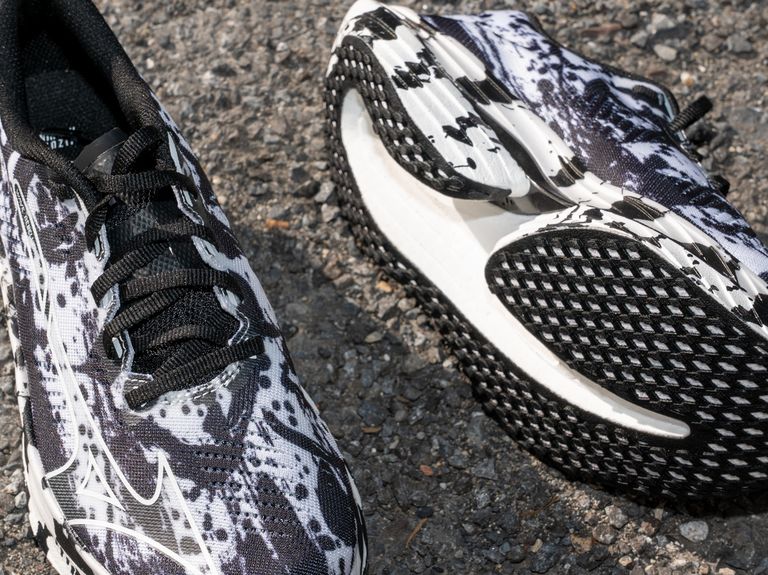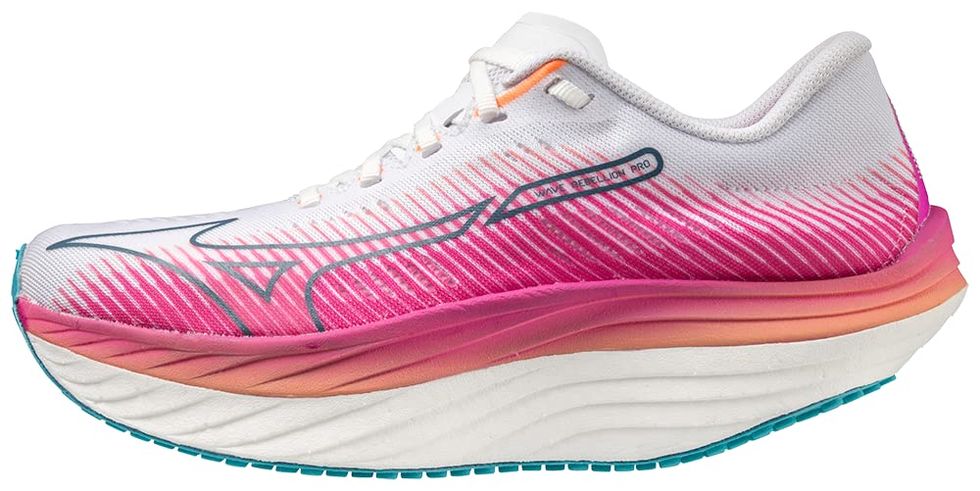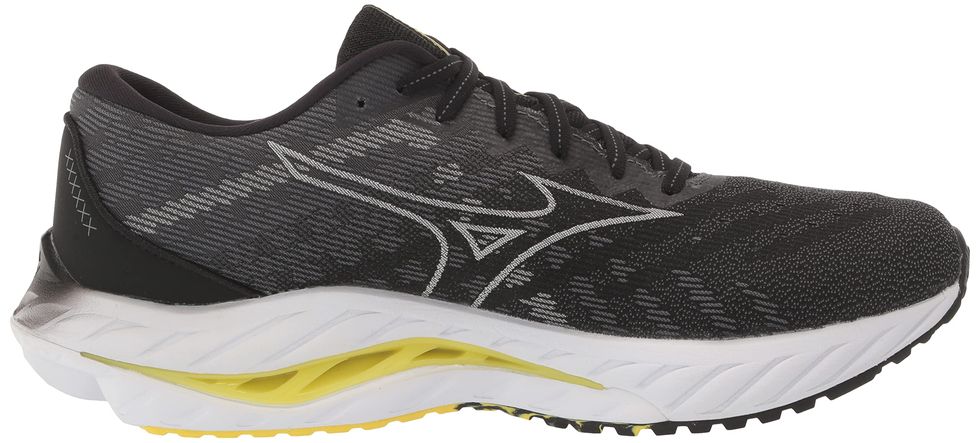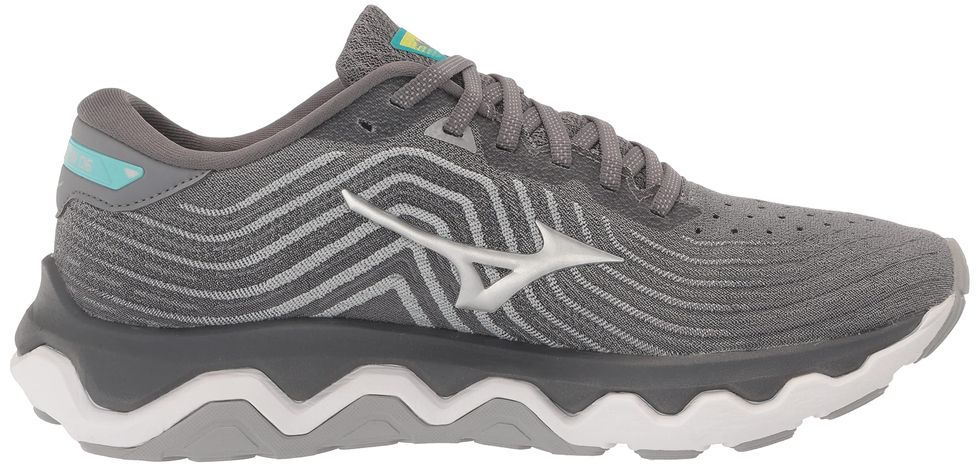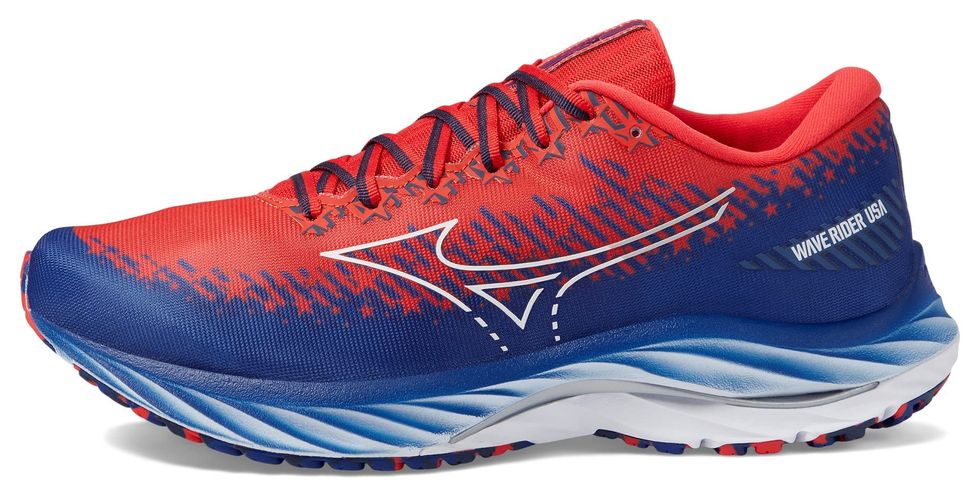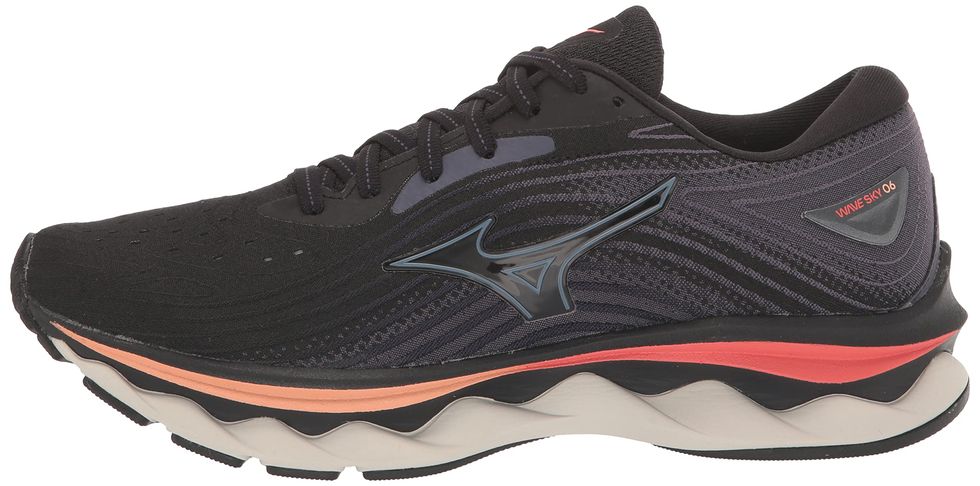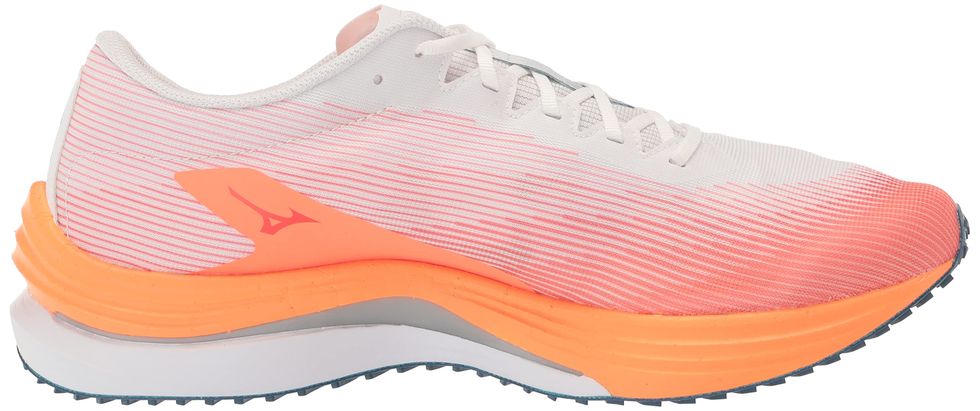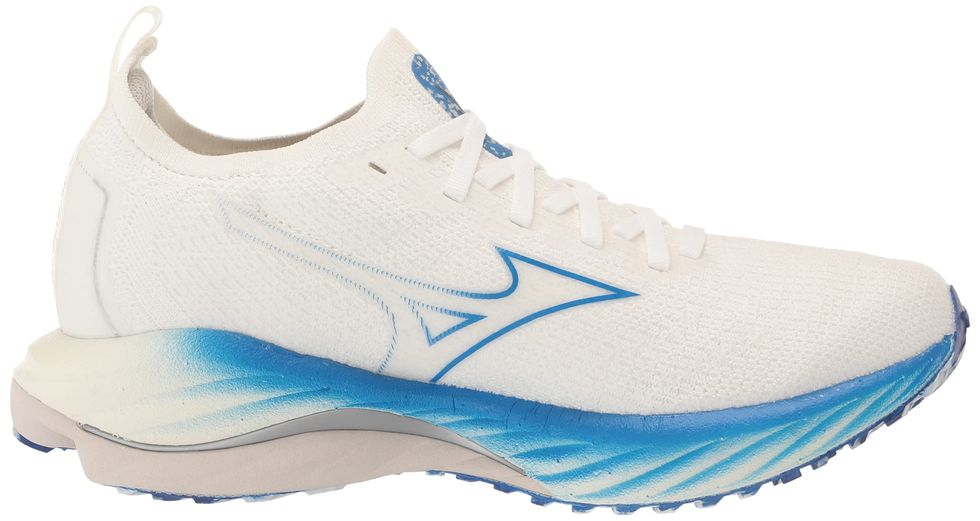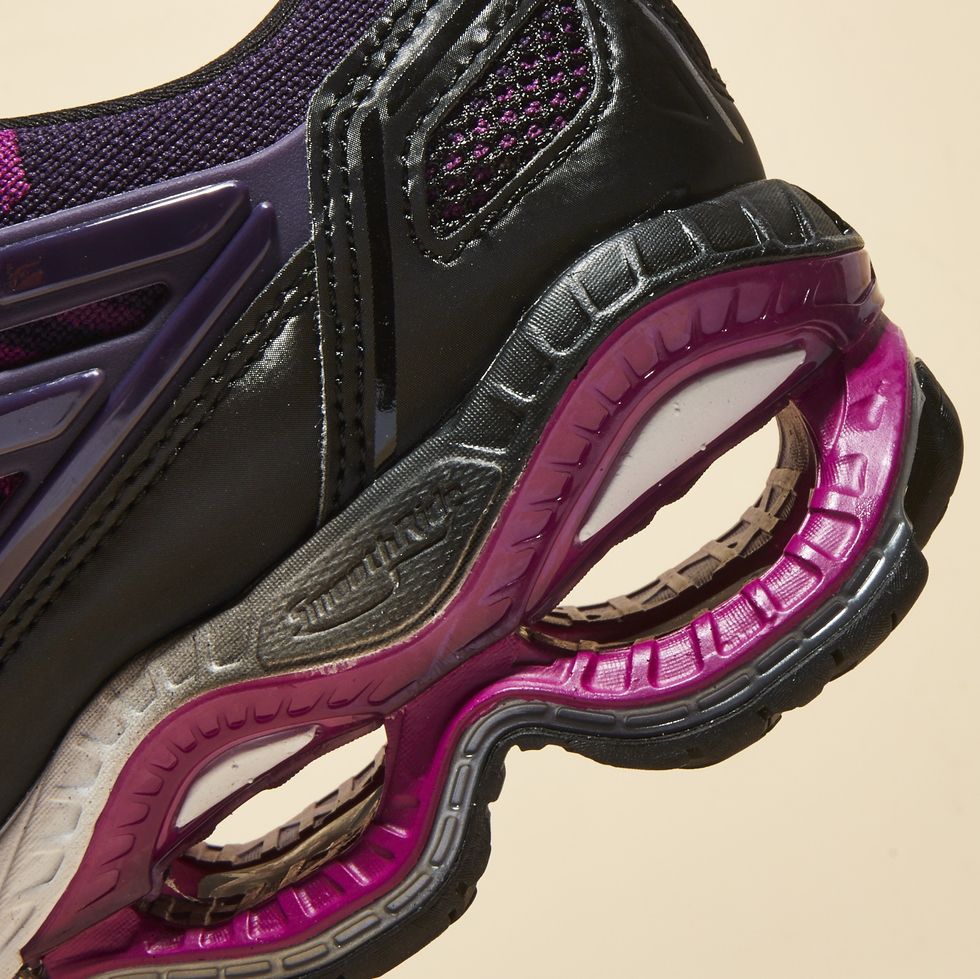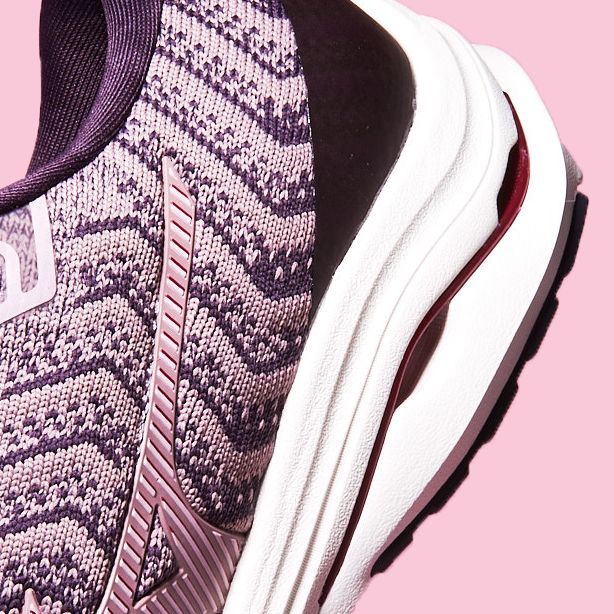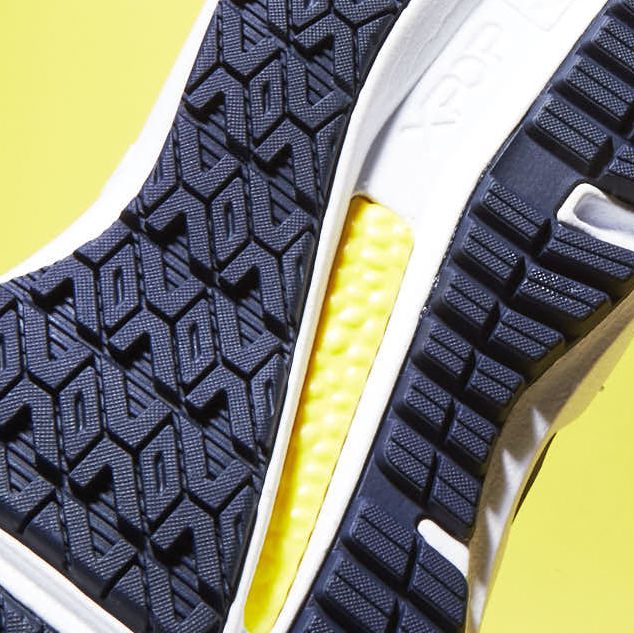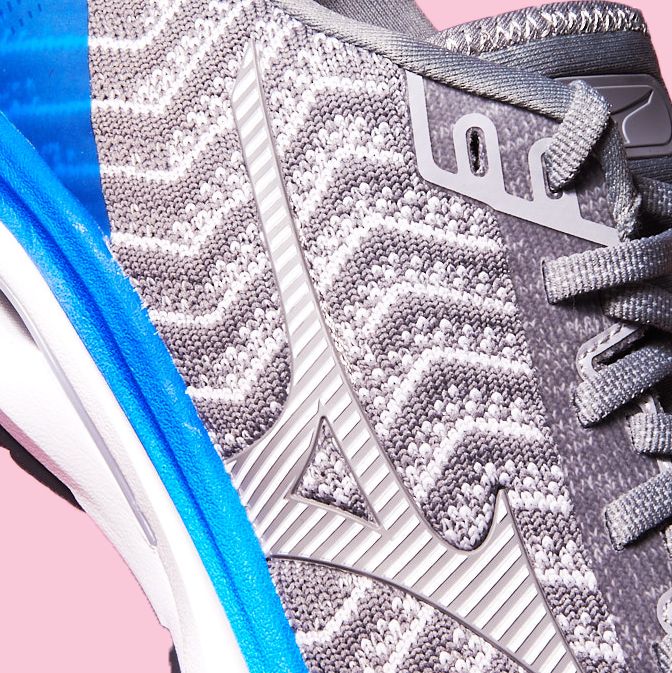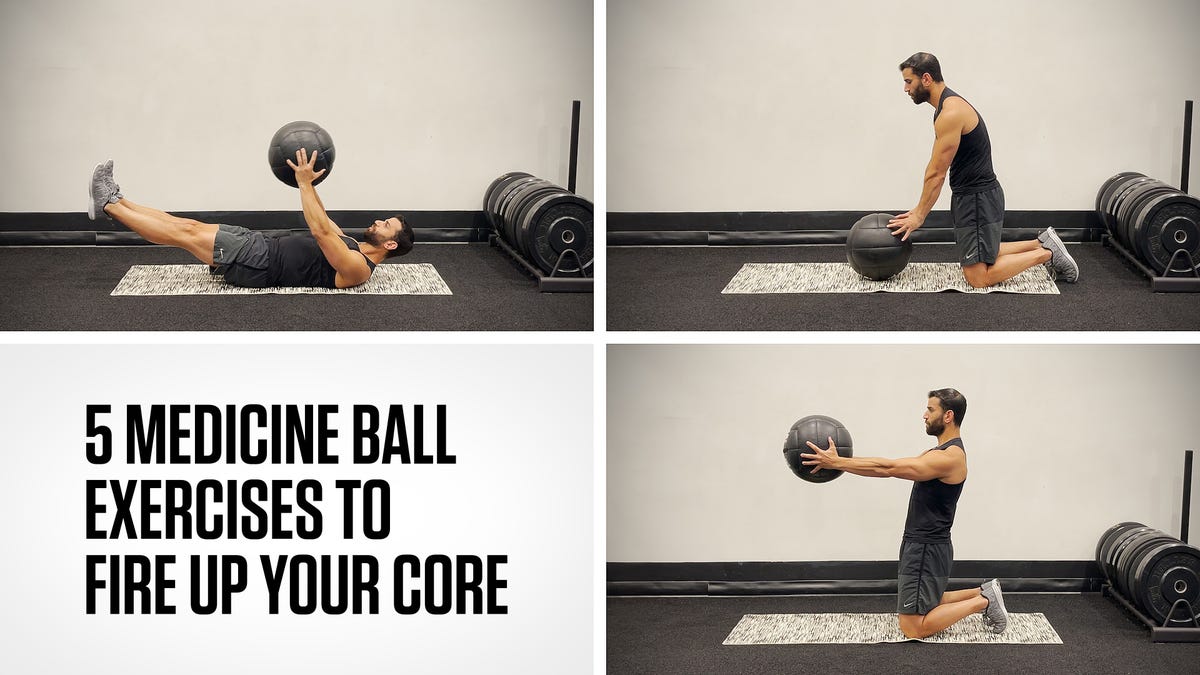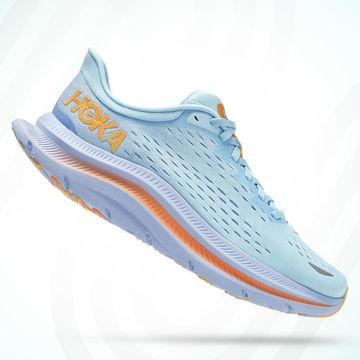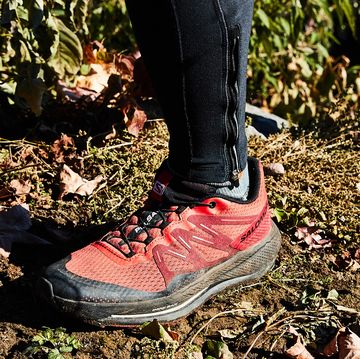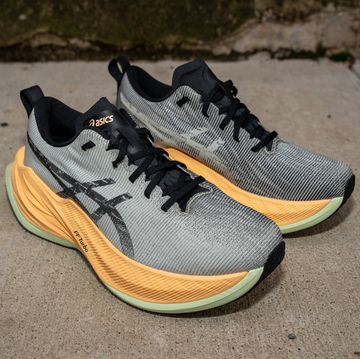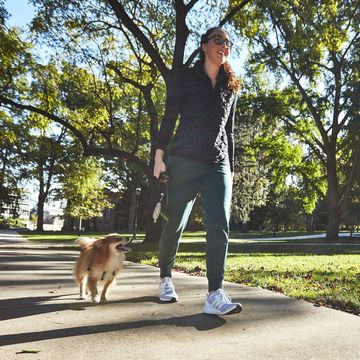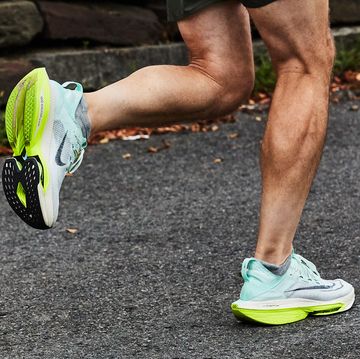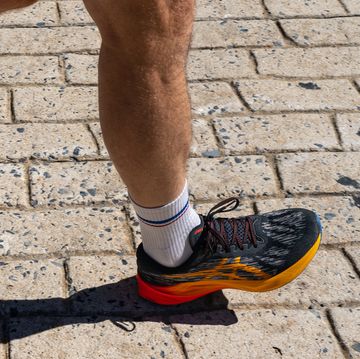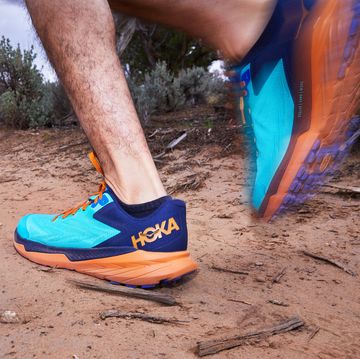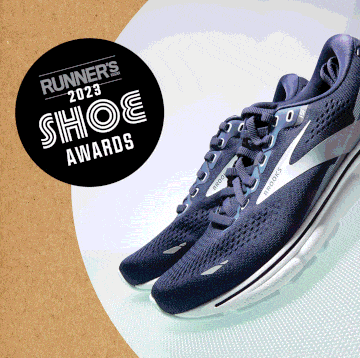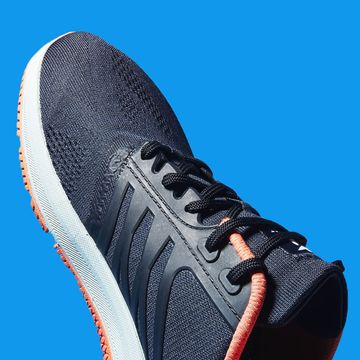While Japanese sporting goods company Mizuno might not have the name recognition as running brands like Nike and Adidas, it has been an influential shoe designer since the ‘80s.
Founded in 1906 by two brothers, Rihachi and Rizo Mizuno, in Osaka, Japan, the brand rose to prominence with the Air Genova ST shoe, which featured an early version of its “wave plate” technology—a novel midsole design that offered a distinctively stable running feel. Mizuno then set out to build the ultimate speed shoe, which resulted in the Racing Star 100 in 1988. The light and highly flexible design proved successful: In 1991, Carl Lewis wore a pair to break the men’s 100-meter dash record.
Today, Mizuno has a reputation for creating durable and supportive shoes that work well for day-to-day training. That said, they’ve also made some exciting racing shoes, such as the Wave Rebellion Pro, which brought the brand into the “super shoe” era.
If you want to know more about Mizuno’s distinctive designs, we’ll outline the main tech that goes into its shoes, from wave plates to newer cushioning foams. If you want to try a pair, we’ve also highlighted the best Mizuno shoes you can get right now.
Get Your Full Run Fit: Best Running Shorts ● Best Running Shirts ● Best Running Hats
Best Mizuno Running Shoes
The Expert: I became a runner in middle school and have covered running and outdoor gear for years, both on-staff at Runner’s World and as a freelance journalist for InsideHook, Men’s Journal, and other outlets. I’ve written more about running shoes than any other kind of gear, and I have firsthand experience running in models from a range of brands. I first wrote this guide in 2018, and I have updated it regularly as Mizuno releases new shoes and running shoe tech.
What to Consider When Shopping For Mizuno Running Shoes
Mizuno’s training shoes — such as the Wave Inspire and Wave Sky — form the core of the brand’s running shoe lineup. As their names imply, these shoes feature a wave plate in the midsole that creates a stable ride, along with plenty of cushioning for good shock absorption and rubber outsoles for durability and grip. Mizuno shoes also have a notably high drop—several models measure 12mm, and the Wave Rebellion Pro has an unheard-of 18.5mm drop in men’s sizes.
That steep heel-to-toe slope isn’t for everyone, but it helps you roll through your stride and transition quickly from landing to toe-off. If you need a supportive trainer that’ll last, Mizuno shoes could be a great fit for you.
In addition, newer releases like the Wave Rebellion Pro and Wave Rebellion Flash showcase the brand’s lighter, speedier side. They feature lightweight, highly responsive midsole cushioning foams and midsole plates designed for maximum energy return—ideal for running at faster paces. We’d recommend them for both speed training and race day.
Wave Plate
Mizuno’s signature shoe feature is the wave plate, a curved piece of plastic made of thermoplastic polyurethane (TPU) or polyether block amide (PEBA), which is embedded in the midsole of the shoe between layers of cushioning. Working in concert with the cushioning, it dissipates impact forces for a softer ride, boosts energy return, and helps the midsole keep its shape, creating a more stable feel underfoot.
Since it was introduced in the 1997 Wave Rider, the wave plate has come to define the classic Mizuno running experience— a stable, well-cushioned, and durable ride.
Some of Mizuno’s newest models feature a revamped wave plate designed for increased speed. The Wave Rebellion Flash features a wave plate made from nylon and glass fiber, which bends on landing and then returns to its normal shape at toe-off, increasing energy return and creating a peppy feel in your stride
The Wave Rebellion Pro takes things even further: The nylon and carbon fiber wave plate is stiffer than the glass fiber version in the Wave Rebellion Flash, so it snaps back more strongly after landing and creates more energy return for runners. Combined with the shoe’s massive drop, it generates a propulsive ride that gets you onto your toes quickly.
Enerzy Cushioning Foam
For cushioning, Mizuno uses a range of proprietary ethylene vinyl acetate (EVA) foams called “Enerzy.” The company stays tight-lipped about its exact chemistry and composition, but Mizuno calls the cushion responsive and lightweight, and claims that it offers 15-percent more energy return than the company’s last generation of EVA foam, U4ic.
You’ll find the standard Enerzy foam in shoes throughout the brand’s running lineup. In shoes like the Wave Horizon, Wave Sky, and Wave Rebellion Flash, you’ll find it acting as a firm base cushion, paired with softer or more responsive foams.
A pair of lighter racing variants, Enerzy Lite and Enerzy Lite Plus foams, give the Wave Rebellion Pro a snappy, propulsive ride while saving weight. Enerzy Lite is formulated for maximum energy return–Mizuno claims it delivers 35 percent more energy return than U4ic–while the even lighter Enerzy Lite Plus minimizes weight and maximizes softness.
Lastly, Mizuno puts the extra soft Enerzy Core foam in training shoes like the Wave Horizon and Wave Sky. If you want a plush, pillowy feel underfoot, look for models with this foam.
How We Evaluated the Best Mizuno Running Shoes
To pick the best Mizuno Running Shoes, I first reviewed the company’s shoe lineup and talked with a brand rep to learn about its latest models and innovations. With data and insights from Runner’s World reviews, RW editor feedback, and my testing experience, I selected a lineup of performance running shoes that showcase the brand’s premier foams, wave plate designs, and other features. This guide features shoes suitable for everything from daily training to racing.
For even more info, click on the links for full-length RW reviews (where available), which offer an in-depth breakdown on the design and performance of individual shoes.
Mizuno entered the highly competitive world of racing super shoes with the Wave Rebellion Pro. Right off the bat, it’s a standout: As one of our testers noted, this shoe’s towering 18.5mm stack height “makes even other super shoes look like flats.” The massive midsole is made from the brand’s supremely soft and bouncy Enerzy Lite and Enerzy Lite Plus foams, which are paired with an embedded carbon-infused nylon plate that adds some much-needed stability to the sky-high base.
Our lab measurements show the Wave Rebellion Pro has a vertigo-inducing drop of over 18mm in men’s and 13mm in women’s (Mizuno’s drop figure is much lower, likely because the brand measured farther back along the shoe's sharply beveled heel). The steep drop practically pushes you onto your toes, encouraging fast paces.
Although the outsole doesn’t typically get much attention on super shoes, it’s a highlight on this model: Mizuno’s G3 polyurethane resin compound saves weight, and the nubby full-coverage design creates superb grip on the pavement. It’s topped with a thin, breathable upper that’s flexible and provides just enough material for a locked-in fit. All in all, it’s a fun, fast shoe–and that’s why we think it’s one of the best of 2023.
The Wave Inspire is a beloved, long-running line of workhorse trainers with soft cushioning and an emphasis on stability. We’ve been impressed by the design before: In a review of an older model, RW staff and testers loved the soft Enerzy foam in the midsole, which created a pillowy sensation in the heel.
Good news: the Enerzy foam is back in the Wave Inspire 19. Unlike the Wave Horizon, the Inspire features a wave plate in the midsole, which adds lateral stability to counteract overpronation. The mesh upper should provide good breathability.
The outsole features Mizuno’s long-lasting and grippy carbon rubber compound, so this shoe can handle some serious mileage. As one of the more affordable shoes in the Mizuno lineup, the Wave Inspire 19 offers a great value: You get some of Mizuno’s top technology in a versatile, durable package.
The Wave Horizon combines a stable, cushioned ride with exceptional durability. The current model, the Wave Horizon 6, represents a significant revamp to the design. The midsole features an all-new combo of resilient Enerzy and super-soft Enerzy Core foams for improved cushioning.
Like previous versions, the foams are cut into an asymmetrical wave shape, which causes the midsole to resist bending laterally. When you land, that stiffness helps counter overpronation in your stride. At the same time, the wave shape allows the shoe to flex from heel to toe, so it moves with your foot and promotes smooth transitions from landing to toe-off.
One of the few Mizuno shoes without a wave plate, the Horizon 6 offers more softness than other shoes on the lineup, while still providing lots of support from the shoe’s shape. Unlike support shoes with a medial post, the wave-shape design doesn’t require a layer of firm, inflexible foam on the medial side of the midsole to support the foot. This allows the shoe to bend with the motion of your feet, creating a more natural running feel. The Horizon is also extremely durable, thanks to a carbon rubber outsole that will last run after run.
The Wave Rider has long been Mizuno’s neutral do-it-all shoe, and the new Wave Rider 27 has received an overhaul to improve energy return and comfort. Mizuno has made quite a few changes to the upper on this shoe.
First, it’s made from a soft air mesh material that has strategically placed stretch zones for a secure fit that won’t restrict your feet. The gusseted tongue is made from a single piece of mesh, so there are no seams to cause irritation. The upper also received a more durable interior lining that should last longer, and a revised heel counter creates a closer wrap around the back of your foot to improve its overall fit and boost stability.
The midsole uses Enerzy foam exclusively (no more U4ic), and it’s paired with a PEBA wave plate to disperse impact forces and promote smooth, stable strides. Like the Wave Horizon, the Wave Rider features a carbon rubber outsole, for a better grip and extra durability.
As a bonus, Mizuno has taken steps to make Wave Rider 27 a more sustainable shoe. The sockliner and upper are fabricated with recycled materials, and the PEBA plate is derived from castor beans.
The Wave Sky is Mizuno’s super-plush shoe. While previous versions achieved a soft ride using a long list of foams, the Wave Sky 6 streamlines the cushion to save weight and showcase the brand’s latest midsole design, which sandwiches its Enerzy and Enerzy Core foams around a wave plate. All three components complement each other: The firm Enerzy foam provides support. The plush, but resilient Enerzy Core compresses to provide that plush feel. The wave plate, as always, stabilizes your foot and dissipates impact forces. Together, the foams and plate promote smooth transitions and create a notably soft, somewhat responsive ride.
Up top, a stretchy woven upper gives the Wave Sky 6 an accommodating fit, and generous placements of carbon rubber on the outsole ensure you’ll have plenty of grip and high-mileage durability. It gives runners a plusher on-foot experience while still providing the stable platform the brand’s shoes are known for. The Wave Sky 6 is a great choice for longer runs or recovery days when your feet could use a little extra love.
The Wave Rebellion Flash is the training counterpart to the top-spec Wave Rebellion Pro racing model, and it’s a great pick for speedwork days when you want to lace up a lightweight, peppy shoe. It’s also one of the more approachable options in the Mizuno lineup: With an 8mm drop, its gentle footbed slope makes it suitable for a wider range of runners. (Not everyone wants a hefty 12mm drop in their shoes.)
The midsole features a suite of Mizuno’s latest tech to help you power through your tempo runs and workouts. For cushioning, it features a combo of Enerzy and highly responsive Enerzy Lite foams for good energy return, with a specialized glass fiber wave plate that helps disperse impact forces and stiffens the shoe for increased stability and snap at toe-off.
The G3 compound used in the outsole saves weight over traditional rubber, and has been enhanced with a more durable G3-DR compound to keep it durable. As a result, it’s built to withstand plenty of mileage.
The Wave Neo Wind and its extra cushioned counterpart, the Wave Neo Ultra, represent a more sustainable approach to running shoe production. The Neo Wind utilizes some of Mizuno’s latest tech, like Enerzy Lite foam, but it’s made with plant-based materials and produced with less resource-intensive manufacturing processes.
The Neo Wind is designed for speed training. In our testing, we found it feels best when pushed to tempo pace. The midsole features Enerzy Lite foam and a wave plate, both of which are made from castor beans. The result? The midsole serves up a firm sensation that’s ideal for speed, though it might feel too unforgiving for slower runs.
The sock-like knit upper is made from undyed yarn, which reduces the amount of water required to produce the shoe, but the simple, tongue-less design caused fit issues for some testers. The outsole uses Mizuno’s G3 polyurethane resin, which gives the shoe dependable grip on wet pavement. Overall, the Wave Neo Wind is proof that a more eco-friendly shoe doesn’t have to sacrifice performance.
Q+A With Running Shoe Expert Michael Charboneau
Unfortunately, no. Mizuno’s running shoe lineup focuses exclusively on road shoes for training and racing. It does not make shoes designed for trail running.
Michael is a freelance writer with years of experience covering gear and the outdoors for Runner's World and other publications; when he's not writing, he's usually biking, hiking, and running in the mountains around Los Angeles, where he lives.
